
Starting June 1st, 2023 Our warehouse fee will be $0.65/cubic foot per month
In effort to lower the warehouse storage fee during inflation, we have went narrow aisle racking.This construction took us four months but the project is finally completed. With narrow aisle racking, we are able to drop storage by 24%.We as partners will go through this inflation together.
10/01/2024
Have you ever wondered how goods from across the globe seamlessly find their way to Canadian shores? The largest ports in Canada are the beating heart of this intricate logistics network, serving as vital gateways that connect the nation to international markets. These bustling maritime hubs do more than just handle cargo; they are dynamic ecosystems where trade flows, economies thrive, and industries flourish.
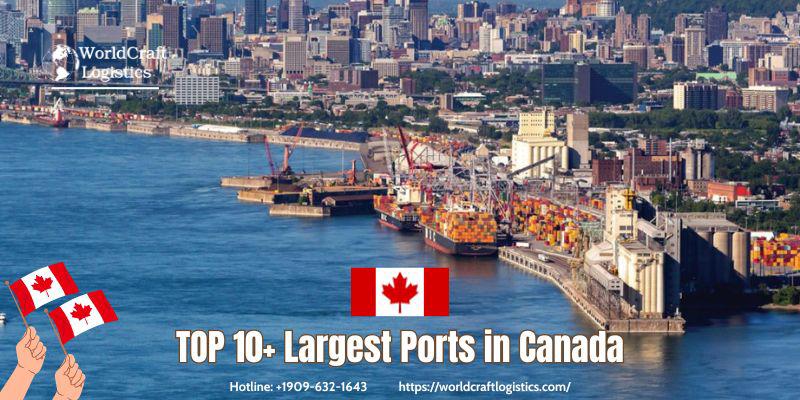
With millions of tonnes of goods traversing their docks each year, these ports are not only critical to Canada’s economic vitality but also reflect the country's evolving role in global trade. Join Worldcraft Logistics in exploring the fascinating world of Canada's largest ports, where every shipment tells a story of connection, commerce and opportunity.
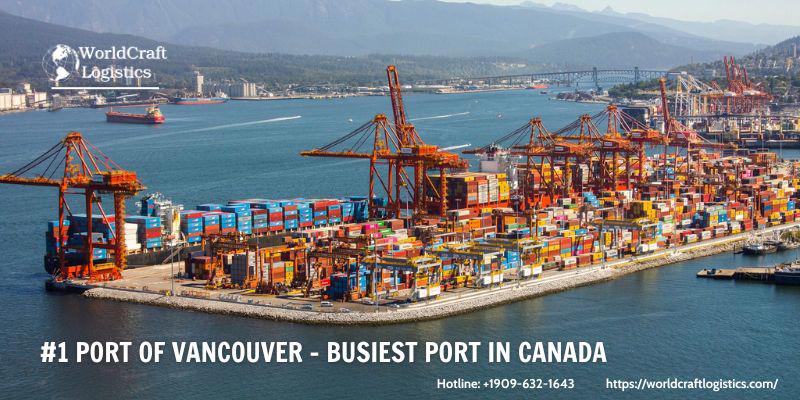
Vancouver is Canada's largest and most diverse port, and it ranks among the busiest in North America. In 2023, the port handled approximately 142 million tonnes of cargo annually. According to the latest data from the port authority, it managed 141.2 million tonnes in 2022 and 146.5 million tonnes in 2021, showcasing its substantial capacity.
Located on the southwestern coast of British Columbia, Vancouver Port spans over 16,000 hectares of water and 1,500 hectares of land. It is bordered by 16 municipalities and operates 29 terminals that manage a variety of cargo, including bulk, containers, liquid bulk, automobiles, and cruise ships.
As Canada’s maritime gateway to 170 countries, Vancouver Port plays a critical role in the economy, supporting 115,300 jobs, generating $7 billion in wages, and contributing $11.9 billion to the national GDP.
With robust rail links and direct access to key shipping lanes, Vancouver Port serves as a vital hub for trade with the Asia-Pacific region.
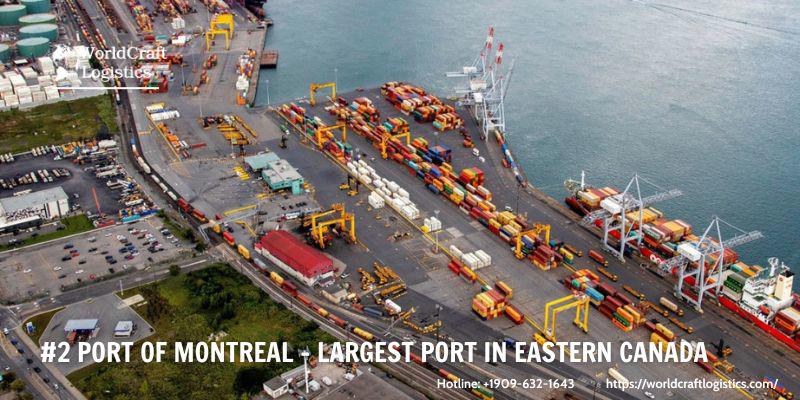
Montreal, the largest port handles a wide range of cargo and serves multiple industries. Situated on the St. Lawrence River in Montreal, Quebec, it is a key hub for both cruise ships and transshipment. Despite being 1,600 km inland from the Atlantic Ocean, the port offers the most direct maritime route between Europe, the Mediterranean, and the North American Midwest.
In 2022, Montreal Port processed 36 million tonnes of cargo, marking a 5.8% increase from the previous year. The container sector experienced a modest rise, with a 1.2% increase, handling 14.4 million tonnes and over 1.7 million TEUs (twenty-foot equivalent units).
As a highly diversified facility with direct connections to more than 140 countries, the port is often regarded as the economic engine of Greater Montreal. It boasts 23 terminals and over 100 kilometers of rail infrastructure. Each year, the port handles around 2,000 ships, 60 to 80 trains per week, and 2,500 trucks daily, supporting a logistics network that serves approximately 6,300 businesses.
In addition to its cargo operations, Montreal Port is a popular cruise destination, with around 45 international vessels visiting in 2022, solidifying its status as a preferred stop for global cruises.
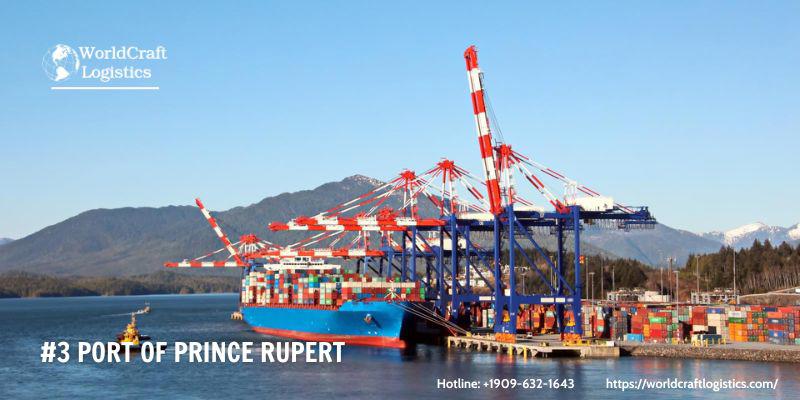
Prince Rupert, the closest North American West Coast port to Asia, is 500 nautical miles nearer than other Pacific Northwest ports, saving approximately 60 hours of sailing time.
Boasting the deepest harbor in North America, the port remains ice-free year-round and can accommodate the largest vessels, with its main channel measuring 35 meters deep and berths between 17 and 18 meters deep.
In 2023, the Port Authority reported that Prince Rupert handled 25 million tonnes of cargo, marking a 1.6% increase from the 24.6 million tonnes processed in 2022. Known as the first purpose-built ship-to-rail container terminal in North America, the port continues to deliver efficient services to its clients.
Fairview Terminal processed 1.9 million TEUs in 2023. The grain terminal, the largest on the west coast, specializes in exporting wheat, barley, and canola sourced from Canada's prairies, with an export capacity of up to 7 million tonnes annually.
Trigon Pacific Terminals facilitates the loading of metallurgical coal, thermal coal, and petroleum coke at a rate of 9,000 tonnes per hour, with a yearly shipping capacity of 18 million tonnes.
Westview Wood Pellet Terminal, which opened in 2014, has an annual export capacity of 1.25 million tonnes of wood pellets.
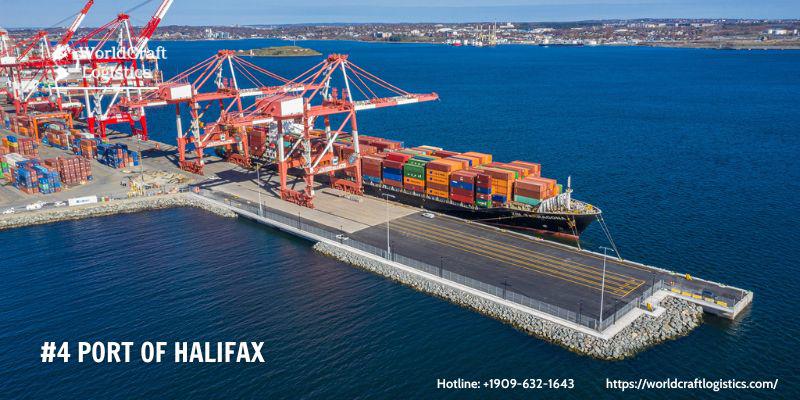
Located in Halifax, Nova Scotia, the Port of Halifax is Canada's eastern maritime gateway, handling over 19.5 million tonnes of cargo annually in 2023. The port welcomes more than 1,600 ships each year, supporting around 13,500 jobs and generating an economic impact of approximately $2.1 billion.
As one of the top four container ports in Canada, Halifax achieved a significant milestone in 2023 by exceeding the 620,000 TEU mark for annual container throughput, processing 621,500 TEUs through its two state-of-the-art container terminals, which can accommodate vessels with capacities greater than 16,000 TEUs.
The port is well-sheltered and operates as an all-weather facility, featuring numerous berths and transit sheds. It attracts the world’s largest shipping lines and maintains connections with 150 countries. In addition to its commercial significance, Halifax is a beautiful seaport and a premier arts and cultural destination for locals and visitors alike.
The port's harbor also accommodates cruise ships and includes an oil refinery, along with shipyards equipped with dry docks, graving docks, and marine slips.
Major exports from Halifax in 2023 comprise grains, lumber, gypsum, general cargo, and containers. The port also receives shipments of rubber, crude oil, automobiles, and project cargo, such as wind turbine parts and other heavy equipment.
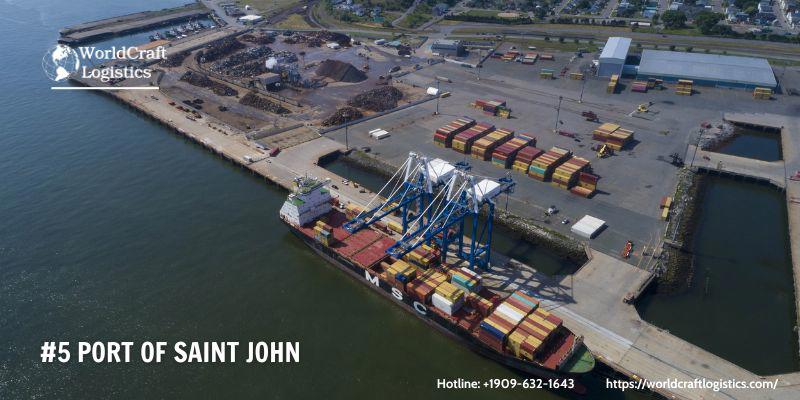
The Port of Saint John spans 120 hectares of land and features 3,900 meters of waterfront along the Saint John Harbour. Located at the mouth of the Saint John River in New Brunswick, Canada, the port is known for its extreme tidal range and strong river currents, with cargo handling facilities situated on both sides of the river.
Saint John is an ice-free deep-water port equipped with modern and specialized facilities. Major exports include forest products, refined oil products, grains, agricultural goods, flour, metals in ingot form, salt, and potash.
The port boasts 21 berths, offering a total docking area of 5,000 meters. It also includes several private facilities, such as the Courtenay Bay terminal, used for shipping refined oil products from the Irving Oil Refinery, and the Canaport Terminal, which primarily handles LNG.
Additionally, the port features a 70-acre container terminal linked to a major highway system, three on-dock warehouses, and 480 reefer plugs.
In 2023, the Port of Saint John set a new record by handling over 110,000 TEUs, marking a significant increase from the previous year. This growth is particularly noteworthy as it occurs amidst a $205 million modernization project, enhancing the port's capacity and operational efficiency.
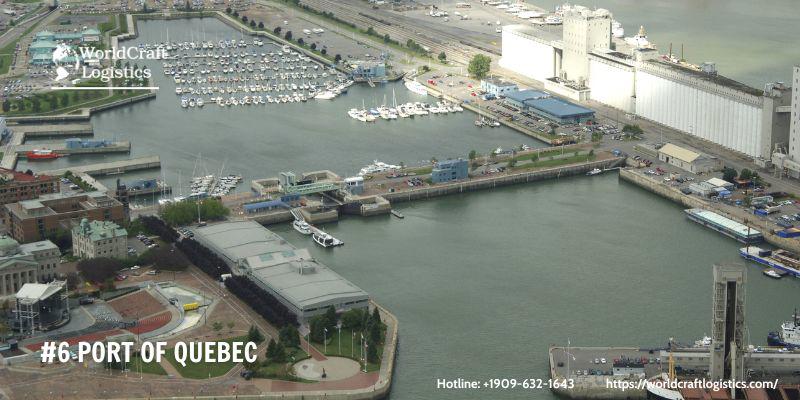
The Port of Quebec is strategically situated on the St. Lawrence River, approximately 750 nautical miles from the Atlantic Ocean. As a vital continental gateway, it maintains robust business relationships with 50 countries, making it a crucial hub for international trade.
The port’s popularity is largely due to its advantageous location, offering the shortest maritime route between Europe and the Great Lakes.
The Port of Quebec features 14 terminals spread across four distinct sectors: Estuary, Anse au Foulon, Beauport, and South Shore. This diversified facility includes the St. Romuald liquid bulk terminal and is equipped to handle a wide range of cargo, including mineral concentrates, general cargo, coal, chemicals, grains, petroleum, granite, crude oil, and other goods such as dairy products and newsprint.
In addition to cargo handling, the port provides extensive ship repair and bunkering services. Annually, the Port of Quebec manages around 1,600 ships, 31 million tonnes of cargo, and accommodates 120,000 passengers, playing a significant role in foreign trade.
The port's operations have generated approximately 14,000 jobs and serve a consumer base of about 105 million, further underscoring its importance to the regional economy and international commerce.
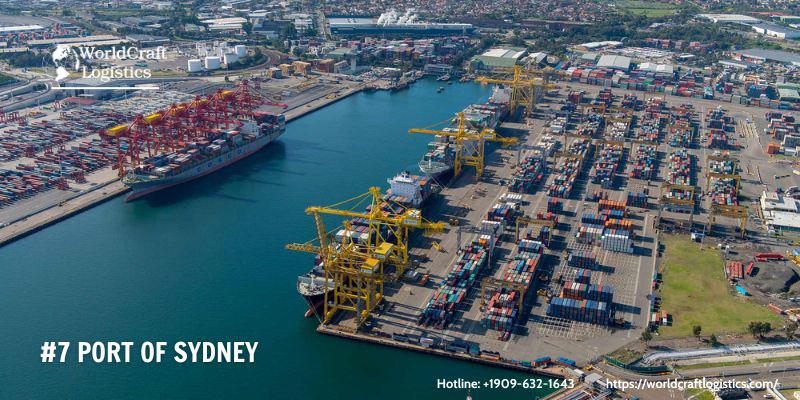
The Port of Sydney is a deepwater facility located in Sydney, Nova Scotia, Canada, on the east coast of Cape Breton Island. As one of the busiest ports in Atlantic Canada, it plays a crucial role in contributing to the local and regional economy.
The port features several key facilities, including the Marine Terminal, Syd-Port Industrial Park, Sydney Steel Corporation Wharves, and the International Coal Wharf.
The Marine Terminal handles a variety of cargo types, including containers, bulk, breakbulk, and project cargo, while the Novaporte Terminal primarily focuses on containerized cargo. Additionally, the Port of Sydney deals with seafood, forestry products, and coal.
With a harbor depth of 14 meters and a 640-meter long wharf equipped with three berths, the port is well-suited for accommodating various vessels.
In 2023, approximately 220 vessels visited the port, and it handled around 8 million tonnes of cargo throughout the year, reflecting its continued importance in maritime trade.
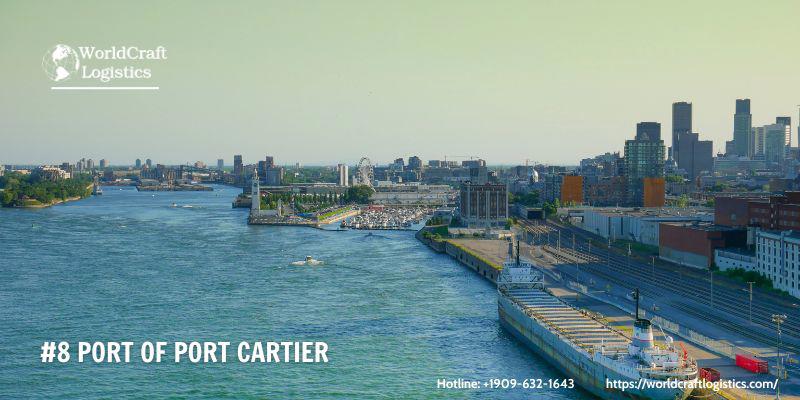
Located in Quebec, at the northern mouth of the St. Lawrence River leading into the Gulf of St. Lawrence, this port stands as a key player in Canada's maritime infrastructure.
The port features two specialized terminals catering to distinct cargo types. The Multi-User Terminal is designed for bulk and general cargo, managing shipments of iron ore, forest products, and grains, while the ArcelorMittal Terminal focuses specifically on exporting iron ore pellets.
Renowned primarily for its iron ore exports, the port ranks among the largest iron ore export facilities in North America, serving as a crucial gateway for the iron ore produced in Quebec and Labrador.
Equipped with a deepwater harbor featuring a 16-meter draft and a 400-meter wharf with four berths, the port also offers 15,000 square meters of outdoor storage space, along with rail and road connections to major North American markets.
Annually, the port accommodates approximately 500 vessels and manages around 16 million tonnes of cargo.
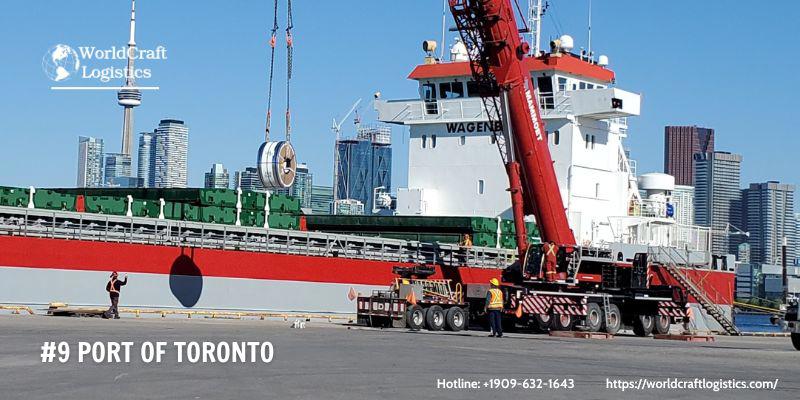
The Port of Toronto is a significant inland port located in Toronto, Ontario, Canada, on the northwestern shore of Lake Ontario. It ranks among the largest freshwater ports in the country, playing a vital role in the nation’s shipping sector and facilitating access to global markets.
The port spans 20 hectares and features seven berths, a 14,000 m² marine terminal, and a 100,000 m² container terminal, which includes heated storage and a paved yard.
The Port of Toronto has two main terminals: the Cruise Ship Terminal and the General Cargo Terminal. The General Cargo Terminal handles a diverse range of commodities, including bulk, breakbulk, steel, project cargo, sugar, salt, aggregates, and asphalt.
The port boasts a 10-meter deep harbor and a 500-meter long wharf, providing it with the capacity to accommodate various vessels. One of its key advantages is its strategic location in the heart of the Greater Toronto Area, one of the largest metropolitan regions in Canada.
In 2023, the Port of Toronto facilitated the movement of approximately 2 million tonnes of cargo and welcomed around 150 cruise ships, reinforcing its importance as a critical hub in the region's transportation network.
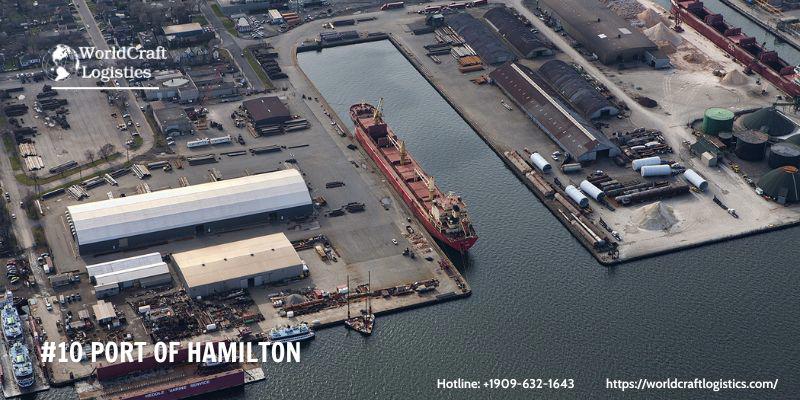
The Port of Hamilton serves as the largest port in Ontario and the western maritime gateway to the Greater Toronto-Hamilton Area. This natural harbor is strategically linked to two Great Lakes shipping routes, the entrance to the Welland Canal, and the St. Lawrence River, located 151 nautical miles from Hamilton Harbour.
The port plays a crucial role in supporting the region's leading industries, facilitating trade flow and enhancing domestic supply chains.
In 2023, the Port of Hamilton handled approximately 12.5 million tonnes of cargo, valued at about $2.3 billion, marking a significant increase from previous years. It is visited by around 700 ships annually, and the 255-hectare port has created over 2,500 jobs in the local community.
The port features 11,000 meters of berthing space, including dedicated berths for handling essential raw materials such as coal, iron ore, steel, salt, grains, sand, liquid fertilizers, and jet fuel.
Overall, the Port of Hamilton continues to be a vital economic engine for the region, accommodating a diverse range of cargo and bolstering local industries.
View other posts:
👉 List of Major Ports in Vietnam: Gateways to Global Trade
👉 Top 20+ Largest Ports in Europe in 2024
👉 Top 15 Busiest Major Ports in China (CN) - List Update 2024
Port Name | Total ( metric tonnes) | Domestic ( metric tonnes) | International (metric tonnes) | Containerized shipments (% of total tonnage) | Number of vessel entrances/clearances |
Come-By-Chance, Newfoundland and Labrador | 27,387 | 12,476 | 14,911 | 0 | 354 |
Sept-Îles/Pointe-Noire, Quebec | 25,786 | 1,805 | 23,981 | 0 | 706 |
Port-Cartier, Quebec | 17,603 | 4,543 | 13,060 | 0 | 369 |
Offshore, Newfoundland and Labrador | 13,663 | 12,391 | 1,272 | 0 | 711 |
Thunder Bay, Ontario | 7,609 | 6,075 | 1,534 | 0 | 390 |
Sorel, Quebec | 6,396 | 3,187 | 3,209 | 0 | 342 |
Nanticoke, Ontario | 6,186 | 1,647 | 4,539 | 0 | 309 |
Baie-Comeau, Quebec | 5,739 | 2,224 | 3,515 | 0 | 261 |
Sault-Ste-Marie, Ontario | 5,468 | 508 | 4,960 | 0 | 471 |
East Coast Vancouver Island, British Columbia | 5,134 | 4,422 | 712 | 0 | 3,328 |
Windsor, Ontario | 4,904 | 2,470 | 2,434 | 0 | 476 |
Port-Alfred, Quebec | 4,806 | 0 | 4,806 | 0 | 127 |
Notes:
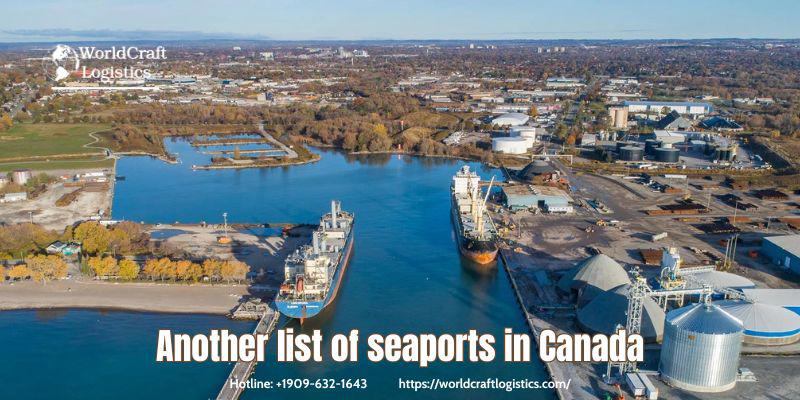
In conclusion, the largest ports in Canada play a vital role in the nation's economy by facilitating trade and connecting domestic and international markets. These ports, ranging from Halifax and Montreal to Vancouver and Toronto, are equipped with advanced facilities to handle diverse cargo types, ensuring efficient logistics and transportation. As global trade continues to evolve, the significance of these key maritime hubs will only grow, reinforcing Canada's position as a critical player in the global supply chain.
SEO
Digital Marketing/SEO Specialist
Simon Mang is an SEO and Digital Marketing expert at Wordcraft Logistics. With many years of experience in the field of digital marketing, he has shaped and built strategies to effectively promote Wordcraft Logistics' online presence. With a deep understanding of the logistics industry, I have shared more than 500 specialized articles on many different topics.

Hot News
08/05/2024

Hot News
02/23/2023

Hot News
02/23/2023

Hot News
02/06/2023
Hot News
02/07/2023